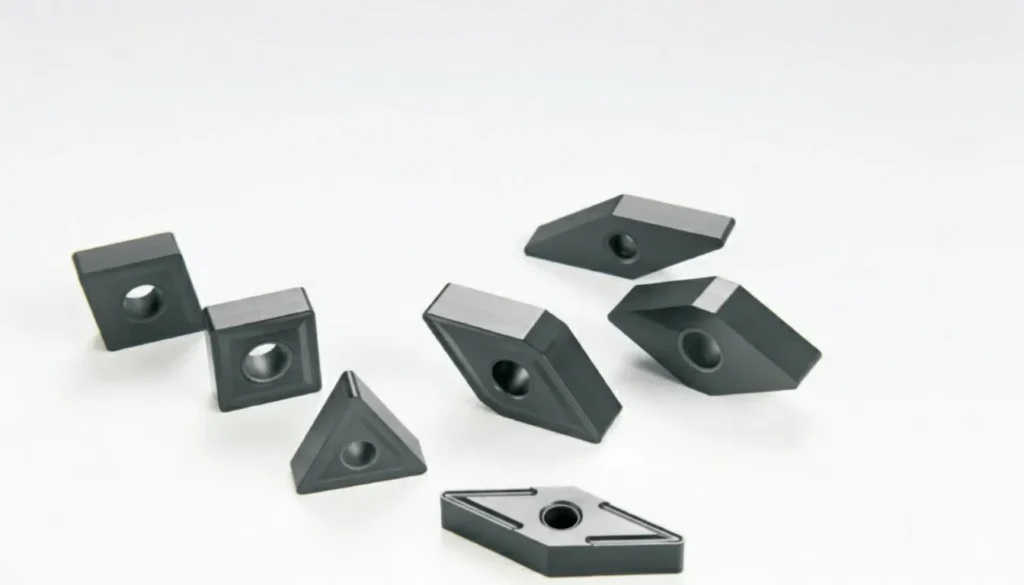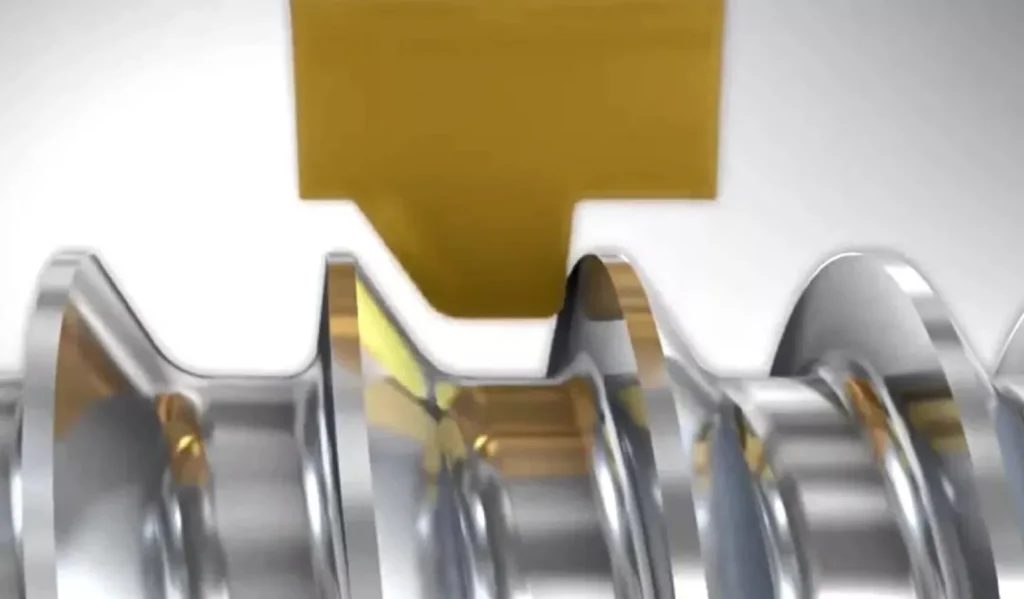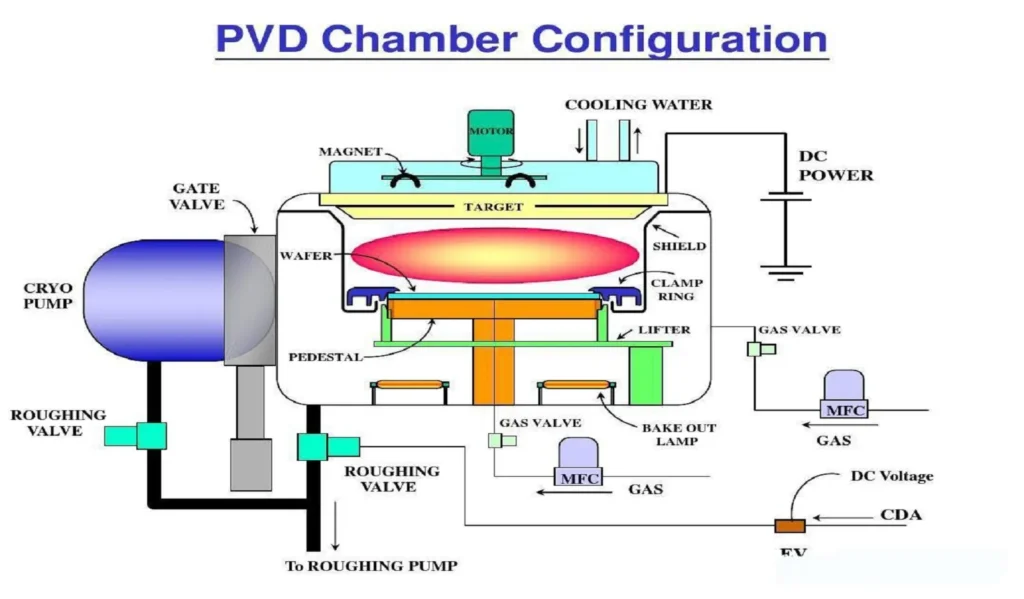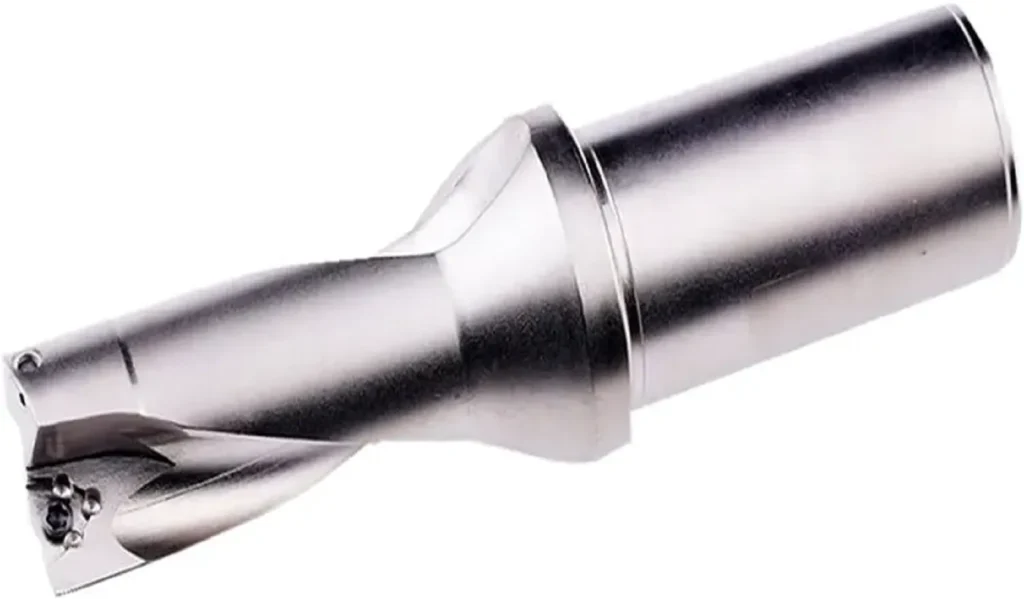carbide grades
Tungsten carbide (WC) grades, particularly the C grades, refer to the American National Standards Institute (ANSI) classification system for cemented carbides. These grades primarily consist of WC particles sintered with a cobalt (Co) binder (typically 3-25% Co), and they are categorized based on properties like hardness, toughness, transverse rupture strength (TRS), and grain size to suit specific applications such as machining, wear parts, and forming dies. The C1-C4 grades are “straight grades” optimized for non-ferrous metals, cast iron, and non-metallics, while C5-C8 are alloyed grades (often with TiC/TaC/NbC) for ferrous steels. Higher C grades (e.g., C10-C14) extend into metal forming and high-impact uses.
The original concept was to rate tungsten carbides according to the job that they had to do. If you had a particular job you would specify a “C” grade of tungsten carbide and you could buy from anybody. This has lead to a situation where a C-7 tungsten carbide can be almost anything as long as it does C-7 style work. According to Machinery’s Handbook it can range from 0 – 75% tungsten carbide, 8 to 80% titanium tungsten carbide, 0 – 10% Cobalt and 0 – 15% Nickel. The problem is that two C-7 tips from two manufacturers will almost certainly work very differently in two different applications.
A common misconception is that there is a straight progression from C-1 to C-14 or wherever. A common view is that each higher grade has less cobalt in the binder and is therefore harder and more likely to break. Following this line of thought is belief that the higher C number is harder and better for wear resistance. This is like classifying automobiles by size from a moped to an eighteen-wheel semi. This is clear and handy but unfortunately it is not true.
carbide grades chart
The table below summarizes key C grades, drawing from standard classifications. Properties can vary slightly by manufacturer, but typical ranges are provided (hardness in Rockwell A scale; TRS in ksi). ISO equivalents (e.g., K for cast iron/non-ferrous, P for steel) are included for global comparison.
| ANSI C Grade | ISO Equivalent | Typical Co Binder (%) | Hardness (HRA) | TRS (ksi) | Grain Size | Primary Applications |
|---|---|---|---|---|---|---|
| C1 | K30-K40 | 10-15 | 88-90 | 250-350 | Medium-Coarse | Roughing cuts on cast iron, non-ferrous alloys, non-metallics; high shock resistance (e.g., heavy milling, broaching, interrupted cuts). |
| C2 | K20-K30 | 6-10 | 90-92 | 225-300 | Medium-Fine | General-purpose turning/milling of cast iron, aluminum, non-metallics; balanced wear/shock (e.g., planers, seal rings, valve components). |
| C3 | K10-K20 | 6-8 | 91-93 | 200-275 | Fine | Finishing cuts on non-ferrous/cast iron; high wear, low shock (e.g., grinding compounds, wire draw dies, nozzles, blades). |
| C4 | K05-K10 | 3-6 | 92-94 | 175-225 | Submicron-Fine | Precision finishing on non-metallics; maximum hardness/wear (e.g., compacting ceramics, high-precision tools, EDM wire guides). |
| C5 | P30-P40 | 8-12 | 89-91 | 200-300 | Medium | Roughing high-strength steels/alloys; resists pitting/deformation, good shock (e.g., slotting, heavy interrupted cuts on stainless). |
| C6 | P20-P30 | 6-10 | 90-92 | 225-275 | Medium-Fine | General-purpose steel machining; versatile turning/milling (e.g., carbon steels, ductile irons, form tools). |
| C7 | P10-P20 | 5-8 | 91-93 | 200-250 | Fine | Semi-finishing steels; edge strength for moderate shock (e.g., profiling, light interrupted cuts, shearing knives). |
| C8 | P01-P10 | 4-6 | 92-94 | 175-225 | Submicron-Fine | Precision finishing steels/superalloys; high wear at low speeds (e.g., fine threading, honing, submicron wear parts). |
| C9 | – | 6-8 | 91-93 | 200-275 | Fine | Wear surfaces with no/minimal shock; high abrasion resistance (e.g., bearings, bushings, flow cages, non-impact wear parts). |
| C10 | – | 8-10 | 90-91 | 300-350 | Fine-Medium | Light shock for wear surfaces; drawing/blanking (e.g., can tooling, compacting dies, light stamping, shearing knives). |
| C11 | – | 11-13 | 88-90 | 350-370 | Medium | Medium shock for wear; stamping/extrusion (e.g., lamination dies, draw/stamping dies, cut-edge rings, slitting knives). |
| C12 | – | 13-15 | 88-89 | 375-400 | Medium-Coarse | Heavy shock for wear; general forming (e.g., draw dies, punches, knives, blades, form rolls). |
| C13 | – | 14-16 | 87-88 | 400 | Medium-Coarse | High-strength coining/ironing; heavy forming (e.g., core rods, coining dies, stamping punches, extrusion tools). |
| C14 | – | 20-25 | 84-85 | 450 | Coarse | Extreme impact/shock; high-toughness applications (e.g., swaging dies, crushing hammers, header dies, cold heading). |
Additional Notes:
- C15-C19 (Specialized): These are less common but included for completeness (from standard references). C15 (light cut/hot flash weld removal, ~10-12% Co, 89-91 HRA); C15A (heavy cut, ~14% Co, 87-88 HRA); C16 (rock bits, ~12-15% Co, 88-90 HRA); C17 (cold header dies, ~22% Co, 81-83 HRA, 350 ksi); C18 (elevated temp/corrosion resistance, nickel-bound ~6% Ni, 90-92 HRA); C19 (radioactive shielding/kinetics, high density ~15% Co/Ta, 87-89 HRA).
- Variations: Submicron/ultrafine grains enhance edge retention; nickel binders (e.g., C18) for corrosion. Consult manufacturers for exact matches (e.g., BC-6 ≈ C2).
C grades classification
C-1 to C-4 are general grades for cast iron, non-ferrous and non-metallic materials
C-1 Roughing
C-2 General Purpose
C-3 Finishing
C-4 Precision
Steel and steel alloys - these grades resist pitting and deformation
C-5 Roughing
C-6 General Purpose
C-7 Finishing
C-8 Precision
Wear Surface
C-9 No shock
C-10 Light shock
C-11 Heavy shock
Impact
C-12 Light
C-13 Medium
C-14 heavy
Miscellaneous
C-15 Light cut, hot flash weld removal
C-15A Heavy cut, hot flash weld removal
C-16 Rock bits
C-17 Cold header dies
C-18 Wear at elevated temperatures and/or resistance to chemical reactions
C-19 Radioactive shielding, counter balances and kinetic applications
grade c2 cemented carbide insert feeds and speeds
This is a relatively hot topic recently. C2 is mainly for general purpose: cast iron, non-ferrous and non-metallic materials. The machining parameters are different for each material, but they are all for roughing. The corresponding parameters are high feed rate and high material removal rate. The main requirements are stable and durable cutting tools.
C2 cast iron machining parameters
For rough machining of cast iron, we generally choose either a universal chipbreaker type or a chipbreakerless type. The first choice is the universal chipbreaker type, while a chipbreakerless design is selected in unstable working conditions.

| Parameter | Gray Cast Iron (GCI) | Ductile Cast Iron (DCI) | Tooling & Chip Breaker Recommendations |
| Grade Range | (ANSI C2) K20 to K30 | (ANSI C2) K20 to K30 | ISO K-Grade Brands (Examples) |
| Cutting Speed Vc | Sandvik: GC3225, GC3210 | ||
| Metric (m/min) | 180 – 300 | 140 – 250 | Korloy: NC6315, NC6210 |
| Imperial (SFM) | 600 – 1000 | 460 – 820 | Sumitomo: AC415K, AC420K |
| Feed Rate f (per revolution) | Roughing Chip Breakers (Examples) | ||
| Metric (mm/rev) | 0.40 – 0.90 | 0.35 – 0.85 | Korloy: RK (Roughing) |
| Imperial (IPR) | 0.016 – 0.035 | 0.014 – 0.033 | Sandvik: MR or HR (Heavy Roughing) |
| Depth of Cut ap (DOC) | Iscar: MR or RR | ||
| Metric (mm) | 4.0 – 10.0 | 3.0 – 8.0 | |
| Imperial (in) | 0.160 – 0.400 | 0.120 – 0.315 |
Sample onmy D8115:
Cutting Parameters Recommendation Table (HT300 Cast Iron)
| Parameter | Unit | Finishing | Semi-Finishing | Rough Machining |
| Cutting Speed (Vc) | m/min | 250 – 600 | 230 – 550 | 200 – 500 |
| Feed Rate (fn) | mm/rev | 0.05 – 0.20 | 0.10 – 0.35 | 0.30 – 0.50 |
| Depth of Cut (ap) | mm | 0.20 – 1.50 | 1.00 – 3.00 | 2.50 – 5.00 |
Cast Iron Machining Case Example (HT250)
| Parameter | Value |
| Workpiece Material | HT250 Cast Iron |
| Machining Method | External Turning |
| Insert Used | WNMG080412 (General type) |
| Insert Grade | D8115 |
| Cutting Speed (Vc) | 415 m/min |
| Feed Rate (fn) | 0.25 mm/rev |
| Depth of Cut (ap) | 1.2 mm |
C2 Rough Machining Turning Parameters for Non-ferrous(Aluminum Alloys)
| Brand (Manufacturer) | Typical Carbide Grade | Roughing Chipbreaker Geometry | Cutting Speed (Vc) | Feed Rate (f) (per rev) | Depth of Cut (ap) (DOC) |
| Sandvik Coromant | H13A, H10F (Uncoated) | -AL, -PF (Positive/Sharp) | 500 – 1500 m/min | 0.30 – 0.80 mm/rev | 3.0 – 8.0 mm |
| Kennametal / WIDIA | K110M (Uncoated), WU10HT | AL, LFS (Light to Medium Feed) | 450 – 1300 m/min | 0.35 – 1.00 mm/rev | 4.0 – 10.0 mm |
| Iscar | IC20, IC07 (Uncoated) | AS, SM (Universal/Semi-Rough) | 400 – 1500 m/min | 0.40 – 0.90 mm/rev | 3.0 – 7.0 mm |
| Mitsubishi Materials | $\text{MS9025}$ (PVD Coated) | AZ (Aluminum Specific Breaker) | 350 – 1000 m/min | 0.25 – 0.75 mm/rev | 3.0 – 6.0 mm |
| Kyocera | $\text{KW10}$ (Uncoated) | A (Aluminum Specific) | 500 – 1500 m/min | 0.30 – 0.80 mm/rev | 4.0 – 8.0 mm |
ISO N-Group Machining Parameter Recommendations (onmy D1 Grade)
| ISO N-Group Workpiece Material | Material Classification | Hardness (HB) | Tensile Strength (N/mm2) | Grade | Feed Rate (f) (mm/rev) | Cutting Speed (Vc) (m/min) |
| Aluminum Alloys | Unaged Aluminum Alloy | 30 | — | D1 | 01/0.4 / 0.6 | |
| Aged Aluminum Alloy | 100 | 340 | D1 | 01/0.4 / 0.6 | 650/600 / 300 | |
| Cast Aluminum Alloy ($\le 12\%$ Si, Unaged) | 75 | 260 | D1 | 01/0.4 / 0.6 | 700 / 450/300 | |
| Cast Aluminum Alloy ($\le 12\%$ Si, Aged) | 90 | 310 | D1 | 01/0.4 / 0.6 | 500 / 300/200 | |
| Cast Aluminum Alloy ($> 12\%$ Si, Unaged) | 130 | 450 | D1 | 01/0.4 / 0.6 | ||
| Copper & Copper Alloys | Unalloyed Copper, Electrolytic Copper | 100 | 340 | D1 | 01/0.4 / 0.6 | 500 / 400/270 |
| Brass, Bronze, Red Copper | 90 | 310 | D1 | 01/0.4 / 0.6 | 400 / 300/250 | |
| Bronze Alloys, Short-Chipping | 110 | 380 | D1 | 01/0.4 / 0.6 | 280 / 200/130 | |
| High-Strength Ampco Alloy | 300 | 1010 | D1 | 01/0.4 / 0.6 |
C2 Rough Machining Turning Parameters for Non-metallic(Aluminum Alloys)
| Workpiece Material | Material Characteristics | Typical Brand Grade (C2/K20 Equivalent) | Cutting Speed (Vc) (m/min) | Feed Rate (f) (mm/rev) | Depth of Cut (ap) (mm) |
| Thermosets (e.g., Bakelite, Epoxy) | Moderately abrasive, brittle materials | Sandvik: H10 Kennametal: K20 | 150 – 350 | 0.15 – 0.35 | 1.0 – 4.0 |
| Thermoplastics (e.g., Nylon, POM, Delrin) | Low melting point, prone to BUE and warping | Iscar: IC20 Kyocera: KW10 | 80 – 200 | 0.10 – 0.30 | 1.0 – 5.0 |
| MDF / Fiberboard | Highly abrasive, short chipping | Mitsubishi: HT10 (High Toughness) | 200 – 400 | 0.20 – 0.45 | 2.0 – 6.0 |
| Graphite (Medium Density) | Extremely abrasive, requires high edge retention | Sumitomo: G10 Korloy: H01 | 150 – 300 | 0.10 – 0.25 | 0.5 – 2.0 |
The above is an introduction to carbide grade C2 (K0/K30) cutting tools and a summary of key points on how to set general turning parameters. It’s impossible to complete the setup for any brand of cutting tool in one go; adjustments are made within recommended ranges to find the most suitable machining parameters.
If you need some cost-effective cutting tools, you can contact us. Whether it’s end mills, carbide inserts, turning tool holders, or even hole-making tools, we have excellent products to match your needs.
Resource
About C2 part from carbideprocessors.com.



